Nestled within the enchanting landscapes of Guatemala, the city of Antigua stands as a living testament to the countries rich and complex history and it architectural accomplishments. As an architect and avid traveler (and if you have read our previous blog posts explored the Guatemala page or listened to the podcast), you may know that Antigua captured my heart in a way few places have done since!

This city, a UNESCO World Heritage Site is a symphony of Baroque architecture. Once the colonial capital of Guatemala, Antigua bears the indelible marks of a bygone era, where the grandeur of Baroque design took root and flourished. Exploring the architecture is one of the things to do in Antigua Guatemala and that is exactly what we are going to do in this post.
Walking through its cobbled streets, you are transported to a time when masterful artisans and visionary architects converged to create celestial masterpieces in stone and mortar. The Baroque churches of Antigua, each a testament to the city's enduring legacy, beckon visitors to embark on a journey through the intricate details and spiritual narratives etched into the very fabric of these architectural marvels. So in this post we are going to look at 5 of them for you to explore whilst in Antigua. We will point out some key aspects of Baroque to help you identify further buildings in the style as you explore Guatemala and further across central America and Mexico alike, and we will generally have a really good time so ... lets get into this.
Things To Do In Antigua Guatemala: The Top 5 Baroque Beauties on the Map.
We are going to look at these 5 Baroque Churches in Antigua.
La Merced Church (Purple)
San Francisco Church (Blue)
La Recolección Church (Green)
La Iglesia de San Pedro (Red)
Capuchinas Convent (Yellow)
1. La Merced Church (Iglesia de La Merced) 5 Baroque Churches Antigua Guatemala
- Architect: Juan de Dios Estrada
- Construction: Completed in 1767

- Features: La Merced Church is a quintessential example of Baroque architecture, it is a beautiful yellow with extensive decoration in stucco which is also painted. The front facade has smooth barrel like arches with decorative columns, it is adorned with intricate stucco work and sculpted figures, reflects the pinnacle of Spanish colonial design.
To the lower half of the facade we are able to see more traditional doric columns with large capitals. The capitals are linked together through a cornice which acts as a table top to some truly beautiful solomonic effect columns (the spiral columns at first floor level. Why effect? Check no.2 to see a true solomonic column), these are topped with a volute (the scroll effect that looks Greek). Centrally a splayed ribbed arch acts as a background of divine light, to the sculpture of a priest looking over us. It is as though the priest is blessing you before entry to the church.
Further figures flank to the left and right standing in their own beautifully manicured recesses which in turn have small decorative stucco columns, frieze', cornices tympanum and Pediments.

The symmetry of the main geometry is stunning with a further two flanking bell towers. Stand directly in front of the doors to feel the full effects of the facade. It pulls you in to its centre point and towers over you to make you feel small, the top gable wall curves upwards to act as a backdrop to a final set of three figures again all looking down on you as though from the heavens above. The backdrop to the central top most figure likely another representation of light however to my eye it almost seems as though it is a reference to the shells depicted during the renaissance by Botticelli, a symbol of birth and life itself! The central facade is truly a wonderful piece of Baroque architecture. The final thing you can almost literally feel is time. It would be John Ruskin in his 7 lamps of architecture who would say that time is one of the most important aspects of religious architecture is the gift of time, as what is more important to a human than time itself? Ruskin would also tilt his cap to craftsmanship. The physical act of creating something by hand which we see in the delicate stucco work. Standing in front of this facade you can feel that time, you can feel that craftsmanship, you can feel the importance of religion.
2. San Francisco Church (Iglesia de San Francisco)
- Architects: Diego de Porres and Juan de Dios Estrada
- Construction: Completed in 1702
- Destroyed: Due to multiple earthquakes

- Features: The San Francisco Church (well whats left of it) boasts an impressive Baroque facade, I would say it is in similar in proportion and detailing to the La Merced Church above, however what you will be able to see is what a Solomic column should really look like, those spiralling columns that look like fluted pottery being sculpted on a wheel, they taper to the top much like an auger.
The facade has 3 tiers to the front facade much like La Merced Church, the proportions are slightly elongated and there are many more religious sculptures that make the entire facade look like an advent calendar of sorts. There is less stucco work and by less I mean non. Now this is not necessarily because it did not exist, it could simply have been destroyed in the multiple earthquakes that the San Francisco church would not manage to come back from. The facade has two bell towers flanking the main central facade.
To the top of the facade, we find the very classical volutes (scroll looking features) they are profiled inwards to the centre of the facade and act as abutments for the top most central figure. Flicking between the first two facades you can really spot the similarities!
There are two gateway entrances to the church both a miniature reflection of the main facade. You are still able to visit the church and further you can see the ruins which feel like a set straight out of 'The Last Of Us'. The wonderful thing about ruins/ damaged buildings is that they can give a fantastic insight to the materials and techniques that were used to build a structure and the San Francisco Church is fantastic for that. If like me you are one of those who spends too much time looking at buildings through squinted eyes whilst visualising how people have built a structure and how then make sure you visit this church. It will reveal some great secrets of the construction of the time.

3. La Recolección Church (Iglesia de La Recolección)
- Architect: Juan de Águila
- Construction: Completed in 1701

- Features: Ok so if ruins are a good insight to construction then we may as well go all the way. At La Recolección you can really see how structural geometries are able to combat earthquakes. You are also able to see construction materials and techniques of the past in an a beautiful site that seems more like an archeological dig than a tourist attraction! At this site you will not be able to get the best overall impression of baroque architecture, yet it is a cool place to spend an hour or two with a coffee and a camera. If you make it your first stop it will give you a good idea of how the other churches have been built, you can also let your inner Indiana Jones as this place has film set vibes.
4. La Iglesia de San Pedro
- Architect: Unknown
- Construction: Completed in 1655

- Features: Confession time, this was one of my favourite spots in Antigua. Not just because of the church, which seemed to be in constant use, but because of the small plaza adjacent to it which is home to one of the most sculptural and unique ancient launderettes you will ever see. Below I have dropped a map so you can see the zone I am referring to.
So lets first talk about the church. Despite the ravages of time and earthquakes, the Iglesia de San Pedro stands as a testament to the endurance of Baroque architecture in Antigua. This church is characterised by its simple yet elegant façade with more of that intricate stucco work. Inside, visitors are treated to the remnants of colonial-era artistry, including remnants of religious paintings and sculptures. The church is a gem, however this whole plaza is a fantastic spot to sit and and take in traditional Spanish city planning. I will put a hot link to google street view of this area here.
What is interesting about the church facade is you will see empty recess we can suggest sculpted figures should be standing. From research I simply cannot find if these were destroyed, removed or if the facade was simply never completed! Above the main wooden door you are able to see a large triangle detail, this is a tympanum the detailed profile around the edge of a tympanum is called the pediment and the central stucco work in the middle of the tympanum and pediment is called an Escutcheon or a festoon. You will not see this detail on the first two of our baroque examples. The whole entrance ensemble could be referred to as a doric porch although the columns here look almost tuscan due to there simplicity. At the top of this facade on the attic/ gable section we are able to see small finals (the small pyramids/ obelisks and lanterns elements. The flanking chapel carries the same details exquisitely implemented just slightly smaller in scale. A truly beautiful piece of architecture that breaks out onto a small square.

The chapel faces onto the plaza which is lined with palm trees and surrounded by immaculately painted Spanish houses topped with those iconic role pan clay tiles. Here you will find locals relaxing or attending the church. Tourists with their cameras or people looking to sell you some sort of item that will amuse the kids for a while. If you walk through the plaza from the church then you will find one of the most stunning launderettes on the planet, Tanque La Unión. This spot would be used during the colonial era for people to meet and well ... clean clothes. Its so well preserved and maintained that it is a wonderful spot to again imagine the people who have used this spot centuries before now!
5. Capuchinas Convent (Convento de Capuchinas)
- Architect: Diego de Porres
- Construction: Completed in 1736
- Founded: Sister María de Cristo Crucificado

- Features: Now for our final stop Capuchinas Convent. Capuchinas Convent is a captivating example of seismic Baroque architecture. Designed with earthquake-resistant features, the convent has endured centuries of seismic activity. Its unique layout, with interconnected rooms and a charming cloister, offers a glimpse into the daily lives of the nuns who once resided there. The church's muted colour palette and understated elegance make it a serene retreat for those exploring Antigua's architectural heritage. Here we can see something that is almost in the middle ground of destroyed to stood the test of time. The baroque elements we have seen are still readily visible; columns, barrel arches, pediments and attic/ gable pieces. What we lose is the decoration and sculptures seen else where. The church is robust in its structure however and for this reason it is a good exploration piece.
As you explore inside this space you will really see how geometry and massing can stand the test of time, if you will excuse the pun God bless arches! One of the most distinctive features of the Capuchinas Convent is its simplicity and austerity, which reflects the ideals of the Capuchin order.
And guess what explorers, after you have explored the Convent, we are done with this blog post so time for dinner, if you are in Antigua and want a cool place to check out then try Cafe Sky Bar where you can look over the city with a drink and some food and reflect on the city of Baroque.
For an overview of Guatemalas history don't forget to have a listen to the podcast episode by clicking here or listening below
Also check out our full Guatemala Guide Page by clicking here or below.
Until the next one explorers, travel safe and look after your fellow backpacker. Jack.

For the curious explorer

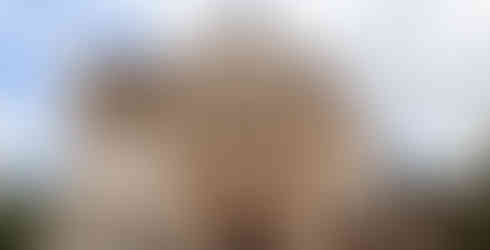

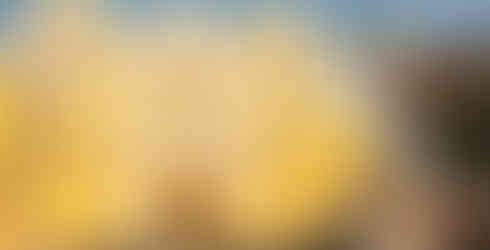





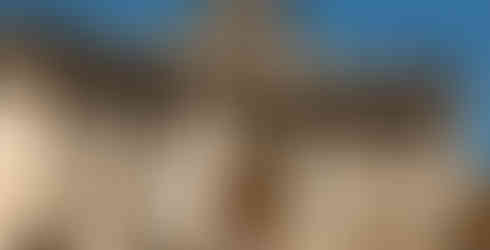


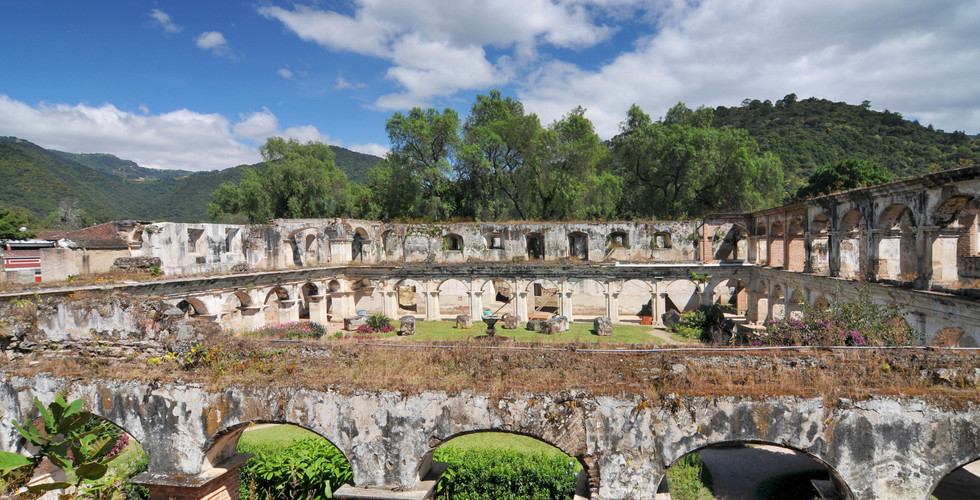
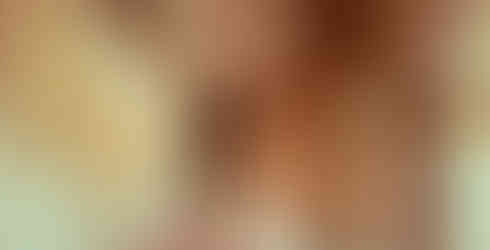


Comentarios